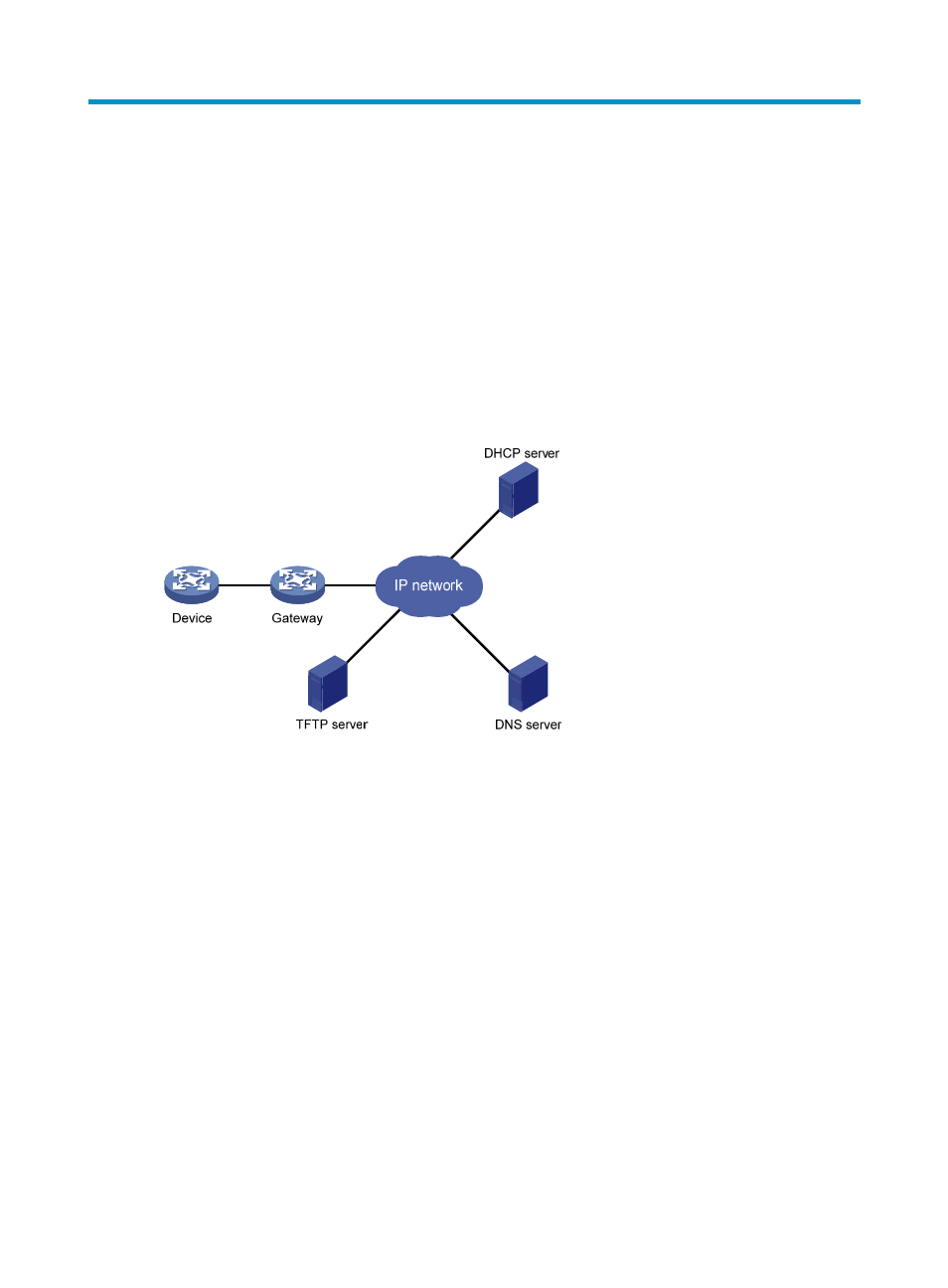Using automatic configuration, Typical automatic configuration network – H3C Technologies H3C SecPath F1000-E User Manual
Page 227

216
Using automatic configuration
Automatic configuration enables a device without any configuration file to automatically obtain and
execute a configuration file during startup. Automatic configuration simplifies network configuration,
facilitates centralized management, and reduces maintenance workload.
To implement automatic configuration, the network administrator saves configuration files on a server
and a device automatically obtains and executes a specific configuration file.
Typical automatic configuration network
Figure 113 Network diagram
As shown in
, the device implements automatic configuration with the cooperation of the
following servers:
•
DHCP server—Assigns an IP address and other configuration parameters such as the configuration
file name, TFTP server IP address, and DNS server IP address to the device.
•
TFTP server—Saves files needed in automatic configuration. The device gets the files needed from
the TFTP server, such as the host name file that saves mappings between host IP addresses and host
names, and the configuration file.
•
DNS server—Resolves between IP addresses and host names. In some cases, the device resolves its
IP address to the corresponding host name through the DNS server, and then uses the host name to
request the configuration file with the same name (hostname.cfg) from the TFTP server. If the device
gets the domain name of the TFTP server from the DHCP response, the device can also resolve the
domain name of the TFTP server to the IP address of the TFTP server through the DNS server.
If the DHCP server, TFTP server, DNS server, and the device are not in the same network segment, you
need to configure the DHCP relay agent on the gateway, and configure routing protocols to enable each
server and the device to reach one another.
- H3C SecPath F5000-A5 Firewall H3C SecPath F1000-A-EI H3C SecPath F1000-E-SI H3C SecPath F1000-S-AI H3C SecPath F5000-S Firewall H3C SecPath F5000-C Firewall H3C SecPath F100-C-SI H3C SecPath F1000-C-SI H3C SecPath F100-A-SI H3C SecBlade FW Cards H3C SecBlade FW Enhanced Cards H3C SecPath U200-A U200-M U200-S H3C SecPath U200-CA U200-CM U200-CS
